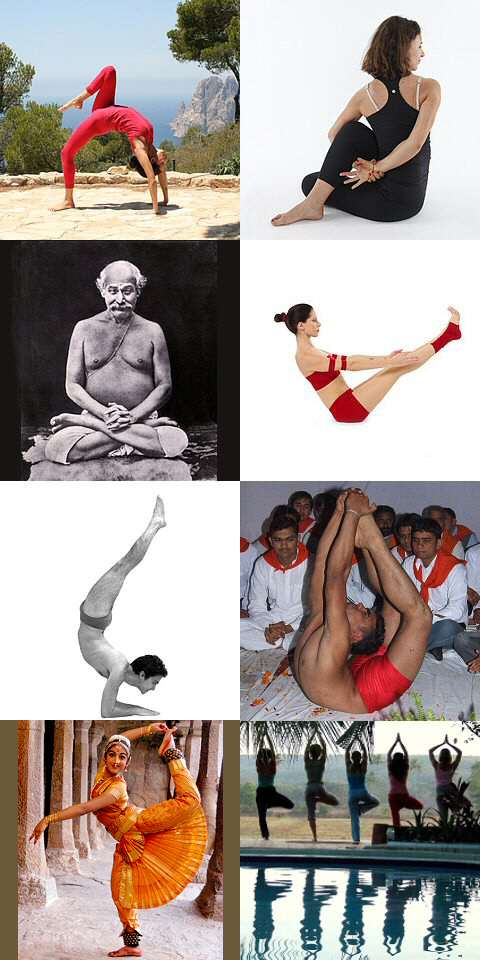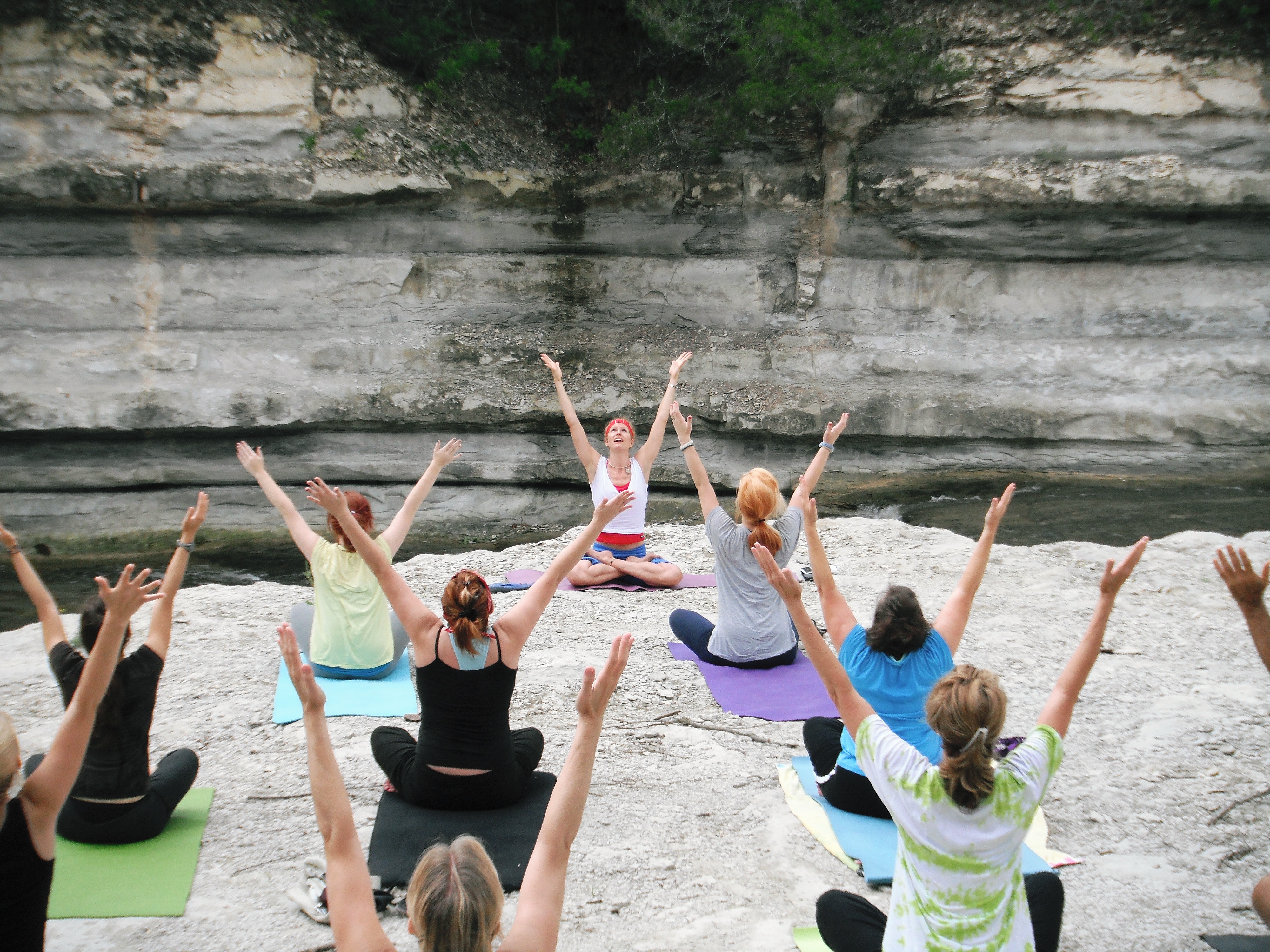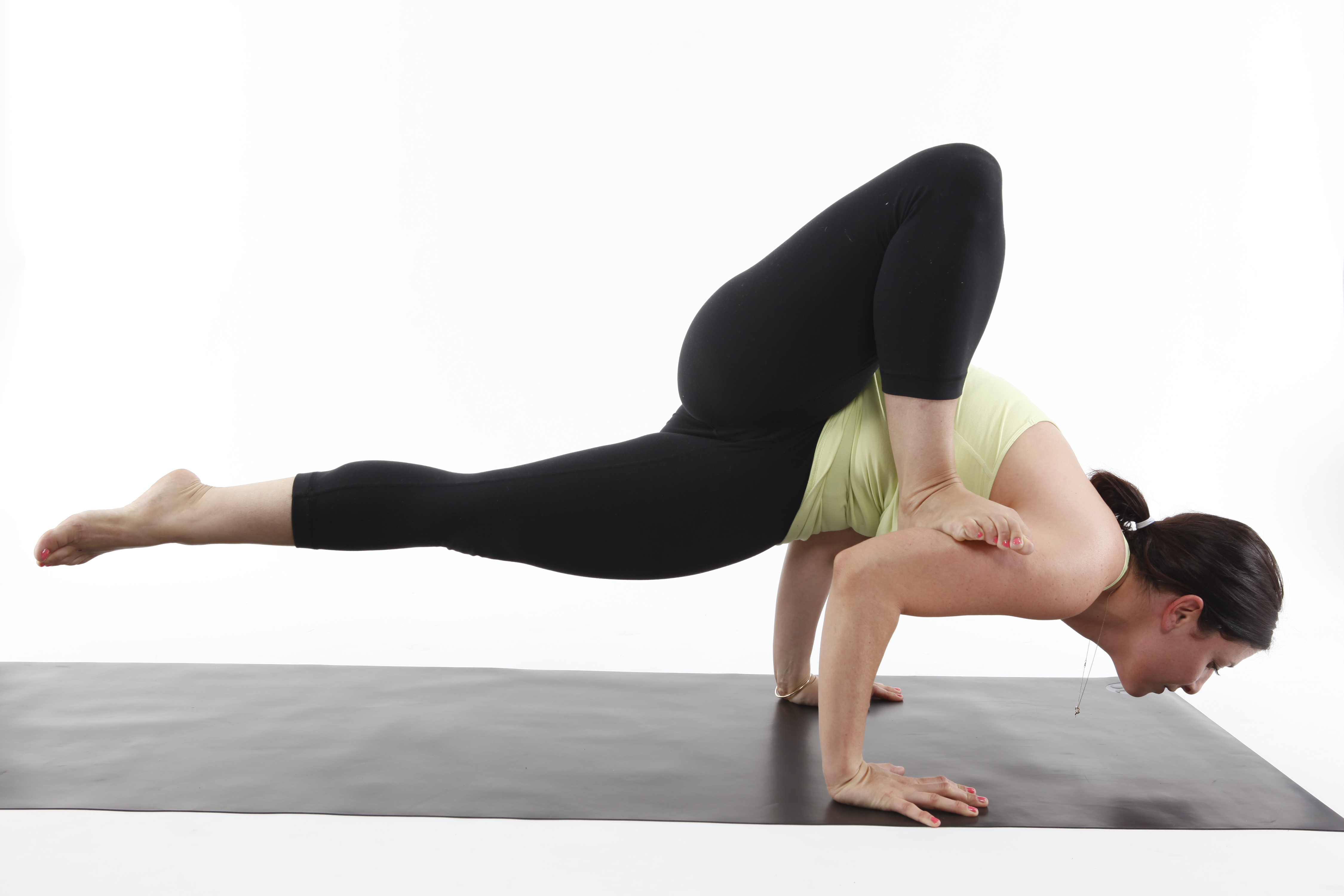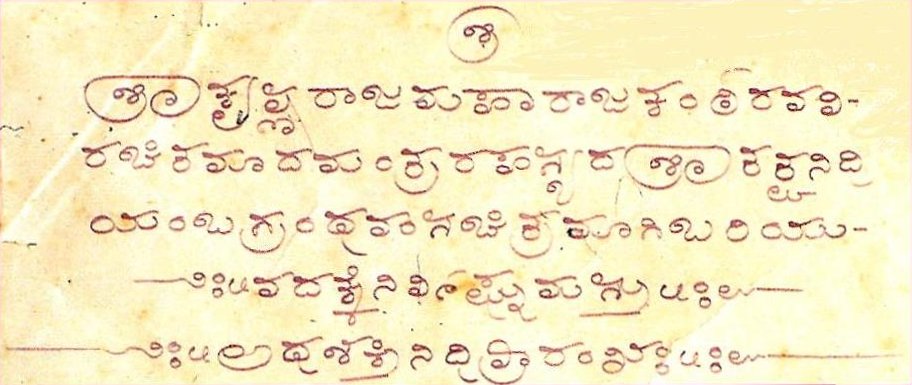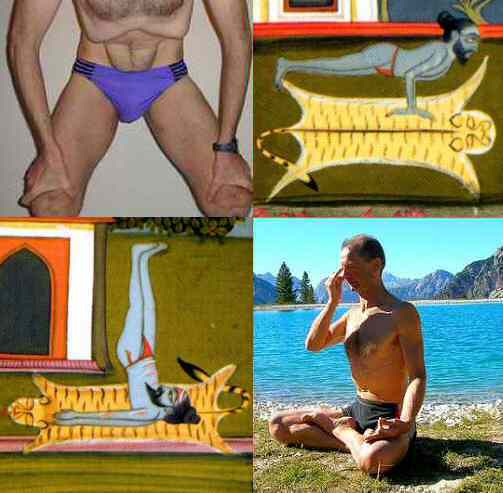|
Bidalasana
Bidalasana (; ) or Marjariasana (; ), both meaning Cat Pose in Sanskrit, is a kneeling asana in modern yoga as exercise. A variant with one leg held up is Vyaghrasana (; ), Tiger Pose; a similar variant with one leg held straight out is Chakravakasana (; ), Sunbird Pose. A variant with the back lowered is Bitilasana (; ), Cow Pose; this is often used as the counter-posture, and a widely used exercise is to alternate between Cat and Cow Poses repeatedly. Etymology and origins The name Bidalasana, , is from the Sanskrit , , meaning "cat", and meaning "posture" or "seat". The alternative name Marjariasana (also written Marjaryasana), , is similarly from , , also meaning "cat". A similar pose was described in Niels Bukh's early 20th century Danish text ''Primary Gymnastics'' as "prone-kneeling position", which in turn was derived from a 19th-century Scandinavian tradition of gymnastics. A different asana, Marjarottanasana, meaning upside-down cat stretch pose, is illustrated in the ... [...More Info...] [...Related Items...] OR: [Wikipedia] [Google] [Baidu] |
Yoga At Your Park - Bitilasana
Yoga (UK: , US: ; 'yoga' ; ) is a group of physical, mental, and spiritual practices or disciplines that originated with its own philosophy in ancient India, aimed at controlling body and mind to attain various salvation goals, as practiced in the Hindu, Jain, and Buddhist traditions. Yoga may have pre-Vedic origins, but is first attested in the early first millennium BCE. It developed as various traditions in the eastern Ganges basin drew from a common body of practices, including Vedic elements. Yoga-like practices are mentioned in the ''Rigveda'' and a number of early Upanishads, but systematic yoga concepts emerge during the fifth and sixth centuries BCE in ancient India's ascetic and Śramaṇa movements, including Jainism and Buddhism. The ''Yoga Sutras of Patanjali'', the classical text on Hindu yoga, samkhya-based but influenced by Buddhism, dates to the early centuries of the Common Era. Hatha yoga texts began to emerge between the ninth and 11th centuries, o ... [...More Info...] [...Related Items...] OR: [Wikipedia] [Google] [Baidu] |
Sanskrit
Sanskrit (; stem form ; nominal singular , ,) is a classical language belonging to the Indo-Aryan languages, Indo-Aryan branch of the Indo-European languages. It arose in northwest South Asia after its predecessor languages had Trans-cultural diffusion, diffused there from the northwest in the late Bronze Age#South Asia, Bronze Age. Sanskrit is the sacred language of Hinduism, the language of classical Hindu philosophy, and of historical texts of Buddhism and Jainism. It was a lingua franca, link language in ancient and medieval South Asia, and upon transmission of Hindu and Buddhist culture to Southeast Asia, East Asia and Central Asia in the early medieval era, it became a language of religion and high culture, and of the political elites in some of these regions. As a result, Sanskrit had a lasting effect on the languages of South Asia, Southeast Asia and East Asia, especially in their formal and learned vocabularies. Sanskrit generally connotes several Indo-Aryan languages# ... [...More Info...] [...Related Items...] OR: [Wikipedia] [Google] [Baidu] |
Asana
An āsana (Sanskrit: आसन) is a body posture, originally and still a general term for a sitting meditation pose,Verse 46, chapter II, "Patanjali Yoga sutras" by Swami Prabhavananda, published by the Sri Ramakrishna Math p. 111 and later extended in hatha yoga and modern yoga as exercise, to any type of position, adding reclining, standing, inverted, twisting, and balancing poses. The ''Yoga Sutras of Patanjali'' define "asana" as " position thatis steady and comfortable". Patanjali mentions the ability to sit for extended periods as one of the eight limbs of his system. Patanjali '' Yoga sutras'', Book II:29, 46 Asanas are also called yoga poses or yoga postures in English. The 10th or 11th century '' Goraksha Sataka'' and the 15th century '' Hatha Yoga Pradipika'' identify 84 asanas; the 17th century '' Hatha Ratnavali'' provides a different list of 84 asanas, describing some of them. In the 20th century, Indian nationalism favoured physical culture in response t ... [...More Info...] [...Related Items...] OR: [Wikipedia] [Google] [Baidu] |
Yoga As Exercise
Yoga as exercise is a physical activity consisting mainly of asana, postures, often connected by vinyasa, flowing sequences, sometimes accompanied by pranayama, breathing exercises, and frequently ending with savasana, relaxation lying down or meditation. Yoga in this form has become familiar across the world, especially Yoga in the United States, in the US and Europe. It is derived from medieval Haṭha yoga, which made use of similar postures, but it is generally simply called "yoga". Academic research has given yoga as exercise a variety of names, including modern postural yoga and transnational anglophone yoga. Postures were not central in any of the older traditions of yoga; posture practice was revived in the 1920s by yoga gurus including Yogendra and Kuvalayananda, who emphasised its health benefits. The flowing sequences of Surya Namaskar (Salute to the Sun) were pioneered by the Rajah of Aundh State, Aundh, Bhawanrao Shrinivasrao Pant Pratinidhi, in the 1920s. It and ma ... [...More Info...] [...Related Items...] OR: [Wikipedia] [Google] [Baidu] |
Yoga Journal
''Yoga Journal'' is a website and digital journal, formerly a print magazine, on yoga as exercise founded in California in 1975 with the goal of combining the essence of traditional yoga with scientific understanding. It has produced live events and materials such as DVDs on yoga and related subjects. The magazine grew from the California Yoga Teachers Association's newsletter, which was called ''The Word''. ''Yoga Journal'' has repeatedly won Western Publications Association's Maggie Awards for "Best Health and Fitness Magazine". It has however been criticized for representing yoga as being intended for affluent white women; in 2019 it attempted to remedy this by choosing a wider variety of yoga models. The magazine was acquired by Outside in 2020. Beginnings ''Yoga Journal'' was started in May 1975 by the California Yoga Teachers Association (CYTA), with Rama Jyoti Vernon as President, William Staniger as the founding editor, and Judith Lasater on the board and serving as ... [...More Info...] [...Related Items...] OR: [Wikipedia] [Google] [Baidu] |
Niels Bukh
Niels Ebbesen Mortensen Bukh (15 June 1880 – 7 July 1950) was a Denmark, Danish gymnast and educator who founded the first athletic folk high school in Ollerup in Funen, Denmark. He achieved international fame as a gymnastics trainer for the Danish team at Gymnastics at the 1912 Summer Olympics, the Olympic Games in Stockholm in 1912. He was inspired by the Rhythmic gymnastics, rhythmic female gymnastics of the Finnish gymnastics educator Elli Björkstén(1870–1947) and the medical gymnastics of Kaare Theilmann. ''Primary Gymnastics'' Within the tradition of Pehr Henrik Ling, Bukh developed his own primitive gymnastics, aimed at using forceful exercises to prevent stiffness and bad bodily habits. His 1924 book "''Grundgymnastik eller primitiv gymnastik''" (known in English as ''Primary Gymnastics'' or ''Primitive Gymnastics'') was a how-to manual about his method, which was later adopted by organizations such as the YMCA. The yoga scholar Mark Singleton (yoga scholar), M ... [...More Info...] [...Related Items...] OR: [Wikipedia] [Google] [Baidu] |
Sritattvanidhi
The ''Sritattvanidhi'' (, "The Illustrious Treasure of Realities") is a treatise written in the 19th century in the Mysore Palace, Karnataka on the iconography and iconometry of divine figures in South India. One of its sections includes instructions for, and illustrations of, 122 hatha yoga postures. Authorship The ''Sritattvanidhi'' is attributed to the then Maharaja of Mysore, Krishnaraja Woḍeyar III (b. 1794 - d. 1868). The Maharaja was a great patron of art and learning, and was himself a scholar and writer. Around 50 works are ascribed to him. The first page of the ''Sritattvanidhi'' attributes authorship of the work to the Maharaja himself: Martin-Dubost's review of the history of this work says that the Maharaja funded an effort to put together in one work all available information concerning the iconography and iconometry of divine figures in South India. He asked that a vast treatise be written, which he then had illustrated by miniaturists from his palace. ... [...More Info...] [...Related Items...] OR: [Wikipedia] [Google] [Baidu] |
Hatha Ratnavali
Hatha yoga (; Sanskrit हठयोग, IAST: ''haṭhayoga'') is a branch of yoga that uses physical techniques to try to preserve and channel vital force or energy. The Sanskrit word हठ ''haṭha'' literally means "force", alluding to a system of physical techniques. Some hatha yoga style techniques can be traced back at least to the 1st-century CE, in texts such as the Hindu Sanskrit epics and Buddhism's Pali canon. The oldest dated text so far found to describe hatha yoga, the 11th-century ''Amṛtasiddhi'', comes from a tantric Buddhist milieu. The oldest texts to use the terminology of ''hatha'' are also Vajrayana Buddhist. Hindu hatha yoga texts appear from the 11th century onward. Some of the early hatha yoga texts (11th-13th c.) describe methods to raise and conserve bindu (vital force, that is, semen, and in women ''rajas –'' menstrual fluid). This was seen as the physical essence of life that was constantly dripping down from the head and being lost. Two ea ... [...More Info...] [...Related Items...] OR: [Wikipedia] [Google] [Baidu] |
Core Strength
Core or cores may refer to: Science and technology * Core (anatomy), everything except the appendages * Core (laboratory), a highly specialized shared research resource * Core (manufacturing), used in casting and molding * Core (optical fiber), the signal-carrying portion of an optical fiber * Core, the central part of a fruit * Hydrophobic core, the interior zone of a protein * Nuclear reactor core, a portion containing the fuel components * Pit (nuclear weapon) or core, the fissile material in a nuclear weapon * Semiconductor intellectual property core (IP core), is a unit of design in ASIC/FPGA electronics and IC manufacturing * Atomic core, an atom with no valence electrons * Lithic core, in archaeology, a stone artifact left over from toolmaking Geology and astrophysics * Core sample, in Earth science, a sample obtained by coring ** Ice core * Core, the central part of a galaxy; see Mass deficit * Core (anticline), the central part of an anticline or syncline * Planetary co ... [...More Info...] [...Related Items...] OR: [Wikipedia] [Google] [Baidu] |



